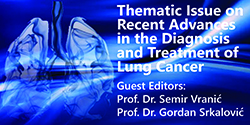Assessment of inpatient psychiatric readmission risk among patients discharged on an antipsychotic polypharmacy regimen: A retrospective cohort study
DOI:
https://doi.org/10.5644/ama2006-124.198Keywords:
Antipsychotics, Polypharmacy, ReadmissionAbstract
Objective. Patients are frequently prescribed multiple antipsychotic medications, leading to higher healthcare costs and increased risk for side effects. The efficacy of multiple versus single antipsychotics to prevent acute relapse, measured by incidence of inpatient readmission, is investigated in Arizona, USA.
Method. A retrospective chart review compared socio-demographic and clinical data from 1,010 patients discharged on a single and 377 discharged on multiple antipsychotic medications. Case management records were reviewed for readmission within one year of discharge.
Results. Younger age, diagnosis of Schizophrenia or Schizoaffective Disorder, prescription of mood stabilizer, shorter length of stay, and discharge to residential treatment or crisis recovery unit were associated with multiple antipsychotics at discharge. Readmission rates of the single (13.7%) versus multiple (15.9%) antipsychotic groups were not statistically different (P = 0.286). Logistic regression analysis established that only age (younger) and the prescription of a mood stabilizer at discharge were significant predictors for increased risk for readmission (p=0.010 and p=0.049, respectively). A Cox survival analysis supported these findings.
Conclusions. Concomitant antipsychotic polypharmacy at discharge did not reduce re- admission risk over a one-year period. Given the increased risk of side effects and financial costs of polypharmacy, this study did not provide evidence to support this practice. Strikingly, only two variables predicted readmission risk, younger age and prescription of mood stabilizer. Although practitioners should follow practice guidelines more closely to prevent unnecessary exposure to potentially lethal side effects of antipsychotic polypharmacy, further studies are needed to better identify patients at high risk for readmission.






